HMS Lancaster has been conducting trials of the Peregrine Rotary Wing UAV, operated by 700X Naval Air Squadron, while on deployment in the Gulf of Oman.
As part of the Royal Navy’s efforts to maintain a forward-deployed presence in the Middle East, these trials aim to enhance the ship’s capabilities in maritime security and surveillance.
The Peregrine UAV, based on the Schiebel Camcopter S-100, is an unmanned aerial vehicle (UAV) designed for surveillance and reconnaissance missions. Developed between 2003 and 2005, the UAV is equipped to carry various payloads, including electro-optics and infrared sensors.
With a maximum takeoff weight of 200 kg, the Peregrine can operate for up to 10 hours with extended fuel tanks and reach speeds of 220 km/h. Its endurance and adaptability make it a valuable asset for operations in the Gulf region.
Powered by either a Diamond engine or a heavy-fuel alternative, the UAV offers versatility for naval operations, allowing it to use standard marine fuels like JP-5 and JP-8. The system has been tested in various naval environments, including trials with international partners such as India, Germany, and France.
In 2023, the Royal Navy selected the system for operations in the Persian Gulf, where it is being used to provide real-time intelligence and enhance situational awareness.
HMS Lancaster, a Type 23 Duke-class frigate, has been deployed in the Middle East as part of the Royal Navy’s ongoing mission to maintain stability in the region.
Launched in 1990, Lancaster underwent significant upgrades during a refit from 2017 to 2019, which included enhancements to its radar systems and the addition of Sea Ceptor anti-air missiles.
The ship, known as “The Queen’s Frigate,” replaced HMS Montrose in the Gulf and is expected to remain forward-deployed until 2025, with crews rotating in and out whilst the vessel remains in the region. Its role in regional security is supported by its advanced surveillance equipment and close cooperation with partner nations.


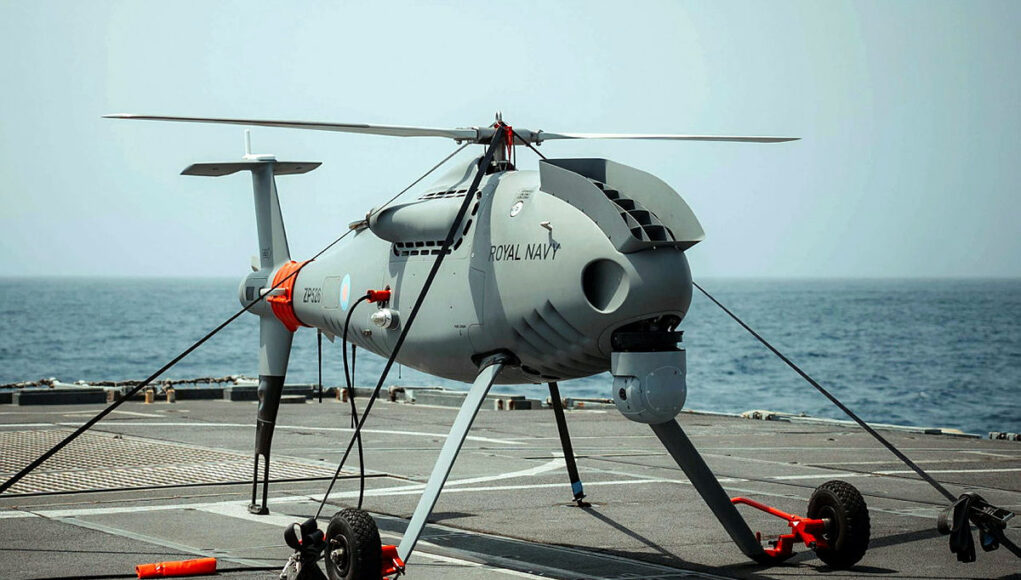
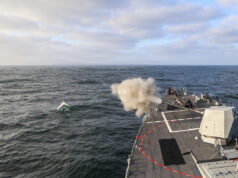
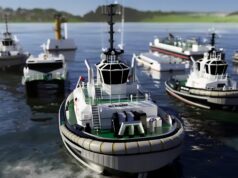

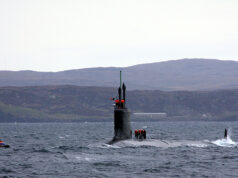
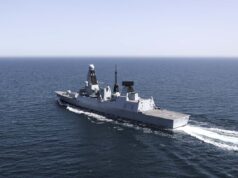

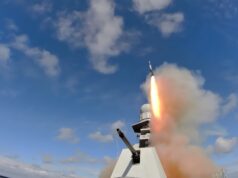
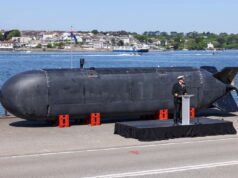
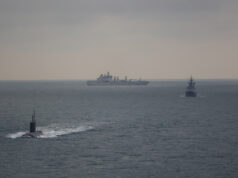
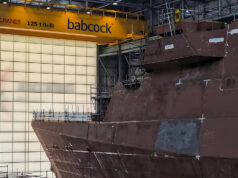

Developed between 2003 and 2005. Why does it take the RN decades to do anything. Developed last year or even this year should be what we are hearing.
Because the top brass had to spaff millions on trials ‘gaining a comprehensive understanding ‘ that will ‘inform future decisions ‘ .
Nice one.😎
A new strategy is needed which goes something like
a) Get a demonstation
b) If that goes OK buy a dozen
c) If the ships crews haven’t pushed them overboard after 6 months give some to whoever wants some
d) Meanwhile you should be doing the same with a dozen more designs
And its not even RN wide.
Just the Gulf I think?
Trial after trail after trial, year after year.
It seems they’re utterly terrified to just buy something, use it, and buy another.
We cannot inform future decisions forever. It gets to a point that people lose heart, and don’t believe they’re even serious any more as they don’t commit, and thus we get sarcastic, irritated posts.
I know the feeling.
Yes. You couldn’t make this up could you. Logically nowadays this type of kit will be essential to the defenceof the fleet and for combat operations. It already is for our most likely enemy.
These things have a MTOW of 200kg. If they crash they could kill someone or damage the ship. So you need trained RPAS pilots. There are the RAF’s training standards and the RA’s. As far as I can tell the RAF’s require you to actually be a pilot first before flying Reaper/Protector. The Royal Artillery don’t seem to and the route seems (from as best I can understand the training brochure) to learn to fly smaller drones, such as Puma and Wasp before going on to the larger Watchkeeper. Their courses are shorter.
Howeverm neither teaches RPAS rotaries. For obvious reasons FAA seems to follow the RAF approach for crewed aircraft training, so they might do the same with RPAS. I’m guessing that a new course would have to be developed for the FAA that may even include crewed helicopter training, so just handing them to whoever wants them isn’t like handing over 2 kg quadcopters.
That doesn’t excuse the snail’s pace introduction into service, after all Schiebel themselves would provide training, but it’s one of half-a-dozen blockers that come to mind. When you figure in operations, maintenance, repair, etc, you can see why even though the price is eyewatering, it’s easier to just buy in a managed service.
BOOM.
PC and I go way back with this…..bloody nuisance.
When the 1st B2 River class was launched, these should have been standard equipment, they could have trialled them to their hearts content before by now, adding them to the whole fleet.
Some of the top brass have been at more trials than a high court barrister, only at even more cost to the taxpayer.
It hasn’t been in development by the RN since 2003/5. Early versions entered service with civilian users as the S-100 during that timeframe. The MOD requirement for such a system for the RN was published in mid 2022.
😂😂 So this kit was developed twenty years ago but has been offered up two years ago presumably on the basis that it is cutting edge. Wow. We are in trouble. Has it been upgraded in anyway since then. Maybe it has moved on from Windows 2000?
It does exactly what it was designed to do. And yes, it has been upgraded significantly since its early days. Including fitting some very advanced military equipment. As the article explains.
Let’s not forget Peregrine isn’t just the Camcopter, and all three major components have been around for 20 years. If memory serves, Thales I-Master got a software upgrade around 2013, with martime mode additions, and a major upgrade around 2017 (software and hardware, I think). Not sure about CarteNav, but I’d expect it’s very different. Arguably, Camcopter is the easiest component to replace.
Many countries already use a 200kg class RUAS, but how many others use one with a SAR capable radar and sensor fusion? Italy (AW Hero and Gabbiano T20), which may or may not be operational yet, Tunisia perhaps (S-100 and PicoSAR) ordered in 2017, not sure of the status or if they have a fusion product — so little information on the Net. Can’t think of anyone else. Finland did trials (Skeldar and PicoSAR). France did ten years of testing on the S-100 and I think is going operational without a radar.
For all the fact that the separate components are old, this actually might be cutting edge!
Ok interesting. At least this shows something is happening and the product is evolving along with it’s kit.
Just to add: I forgot South Korea was the first country to trial S-100/I-Master, but I haven’t find anything to suggest that they run it operationally either. Their recent order of the larger S-300 Camcopter might suggest they want/need a more complete maritime radar and that a synthetic aperture radar, with maritime modes, wasn’t enough.
Especially bad when you consider all the innovation in drones in the past two decades. It’s like trialing a Sopwith Camel in the middle of WW2 to find out if these newfangled ‘aeroplanes’ are all they’re cracked up to be..
Well it was aerodynamically unstable and fly by wire so well ahead of its time.
😂
Agreed, the Schiebel S-100 is a very old design. It’s not apples for apples, but Ukraine and Russia are now developing and deploying new drone designs in just months!
As far as I can make out, the deployment on Lancaster is nothing more than trials under a two-year £20m contract awarded to Thales early last year. Despite the markings the RN doesn’t actually own the drone. A prudently cautious approach or no money for anything more ambitious – take your pick!
Interesting the USN has pulled back from the use of large UAV’s – deciding that from a cost perceptive they aren’t actually much cheaper to buy/maintain/operate than manned helicopters, whilst less flexible and more likely to be lost. Of course the USN and RN are miles apart in terms of budget, and the likes of the OPVs would benefit hugely from having a decent mid-size UAV roughly equivalent to Peregrine, if the overheads in terms of space and manning were low enough.
I hoped that was a mistake 😭
“ With a maximum takeoff weight of 200 kg, the Peregrine can operate for up to 10 hours with…”
Shouldn’t that read
“ With a maximum payload weight of 200 kg, the Peregrine can operate for up to 10 hours with…”
I don’t think so. The specs I’ve seen are 6 hours endurance with 50kg payload so presumably that 200kg max takeoff weight is 50kg payload + however many kg the full internal tank fuel load is plus whatever the empty weight is. The 10 hour endurance being talked about here is when external fuel tanks are added so presumably the extra 4 hours of endurance is coming from re-allocating some of the 50kg @ 6 hours payload weight to the added weight of more fuel in the external tanks (plus the added weight of the external tanks themselves) so at 10 hours endurance maybe the actual payload weight is more like 20 or 25kg?
At least that’s the way I’m reading all of this.
200kg seems very light including fuel/frame/engine/electronics/package etc.
Agreed, it does seem light but only a bit.
According to Schiebel’s brochure the “typical empty weight” is 114kg and maximum takeoff weight is indeed 200kg. Admittedly though the rest of the numbers don’t quite add up to my explanation because the fuel capacity is 57L so working on density approx equal to water that’s another 57kg full internal fuel tanks and then add 50kg mission payload and you get 221kg.
Then again in looking at the Schiebel brochure I see it mentions typical 50kg payload and > 6 hour endurance but that is in separate sections of the spec so it doesn’t actually say 50kg @ 6 hour endurance. If the endurance at 6 hours is closer to 30kg then the numbers do almost add up – 114kg empty weight + 30kg payload + 57kg fuel = 201kg total weight.
If the rest of my thoughts are right though, the 10 hour endurance comes from sacrificing some of the 6 hour payload weight for more fuel in internal tanks, if you’re starting that trade-off from only 30kg payload at 6 hours I am wondering just how much payload you get at 10 hours. 10kg maybe? Enough for a basic optical package I suppose but not a huge amount else?
Fuel, at least aircraft fuel in WW2 was 0,75kg per litre Metric
I think you are right.
As much as it’s tempting to chastise the navy for its sluggishness in testing it (or similar platforms) I think one can see why there were doubts about its utility till recent years. I am assuming it’s also come some way since 2003 to 2005 in terms of capability.